Here is a summary of the information you can find in this article:
| Product format | Preparation | Incubation | Reading |
| Delvotest® plates | Instructions | DAS | DAS |
| Waterbath | Visual at control time or Delvo®scan | ||
| Dry incubation |
Before you start testing
Make sure you have found the control time of the batch you are about to use, your sample is representative and your tests are at room temperature.
Establishing control time
We recommend taking along at least 1 (one) negative control for each incubation run, to verify the good performance of the test, to test procedure and to establish control time. Read here 'Establishing control time'.
Collecting your milk sample
The milk sample should accurately represent the milk to be tested and must be homogenized before analysis. Follow these steps to ensure the sample is representative and properly homogenized. Especially when testing milk from individual animals:
- Use a clean container sufficient to hold a full milking. Do not use disinfectant/or cleaning reagents
- Milk all four quarters of the udder. Do not use the foremilk strip from the teats as a sample. Do not use a milk sample from only one quarter of the udder.
- Mix the milk gently to avoid creating foam.
- Use a clean sampling tool/sample mug when taking a new sample.
- Use good hygienic practices to avoid contaminating the milk samples.
 Acclimatizing at room temperature prior to use
Acclimatizing at room temperature prior to use
Before using Delvotest® plates, remove the tests that you will use from the fridge to reach room temperature. Make sure that after preparation you return the remaining Delvotest® back in the fridge. Ampoules and plates should not stay out of the fridge for more than 3 hours.
Preparing your Delvotest® plates
1. Get your plates
Determine the number of plates and/or blocks of 16 wells needed and cut them off with a sharp knife or scissors. Be careful not to damage remaining blocks. 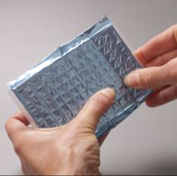 Remove the aluminum foil completely for the plates or blocks of 16 wells that you are about to use.
Remove the aluminum foil completely for the plates or blocks of 16 wells that you are about to use.
Return unused plates/ block back to the fridge.
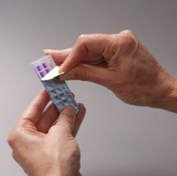
2. Add the milk samples on your plate
Gather your negative and positive milk control samples and the unknown samples to be tested.
Pipette the samples into the wells (100 μl), using a clean pipette tip for each sample. Identify the position of each sample by the letters and figures on the edge of multi plates.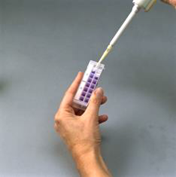
Seal the plates/or blocks with the adhesive strips or sheets supplied with the test kit.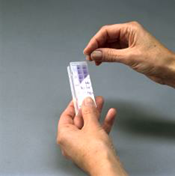
Are you preparing samples for the DAS? Read important information on how many milk samples are required in Section 4 - control guidelines.
3. Incubate your plates
| Method | Delvotest® Accelerator Smart (DAS) | Waterbath | Delvotest® Microplate incubator or other dry incubation |
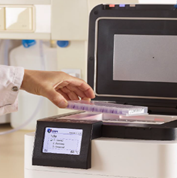 | 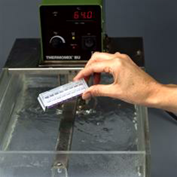 | 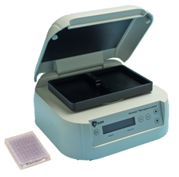 | |
| Incubation temperature | Preheated to 64 °C ± 2 °C. | ||
| Cover the plate | Use the provided plate stickers in your Delvotest® box | ||
| Place the plate | Add the plate/or blocks in Delvotest® Accelerator Smart and follow the instructions | Float the plate/or blocks in a stirred lidded water bath | Put the plates/or blocks in the Delvotest® Microplate Incubator and close the lid |
| Prepare for reading | No further action required | Add a timer to establish control time | |
4. Read your plate results
| Method | Delvotest® Accelerator Smart (DAS) | Visual reading | Delvo®scan |
| When to read | The results are read automatically at control time, when sensitivity is optimal. The incubation stops automatically | Establish control time with the negative control milk samples on the plate. | |
| Delvotest® T | Refer to section - Expected control time per species | Read the ampoules at control time immediately after incubation using the colorcard | Place the freshly incubated ampoules in Delvo®Scan (v 5.08, scanner EPSON V600, cutoff 0). Refer to the related Delvo®Scan instructions here. |
| Delvotest® SPNT | Read the ampoules at control time immediately after incubation using the digital reference card | ||
| The 1/3 upper part of the agar gel in the well can be sometimes not entirely yellow. Read the test plates or blocks result from the bottom. | |||
| Place in cold bath for later reading | To allow more time for reading after incubation, the tests can be dipped it in a cold bath of water with ice. The cold stops further color change. | ||